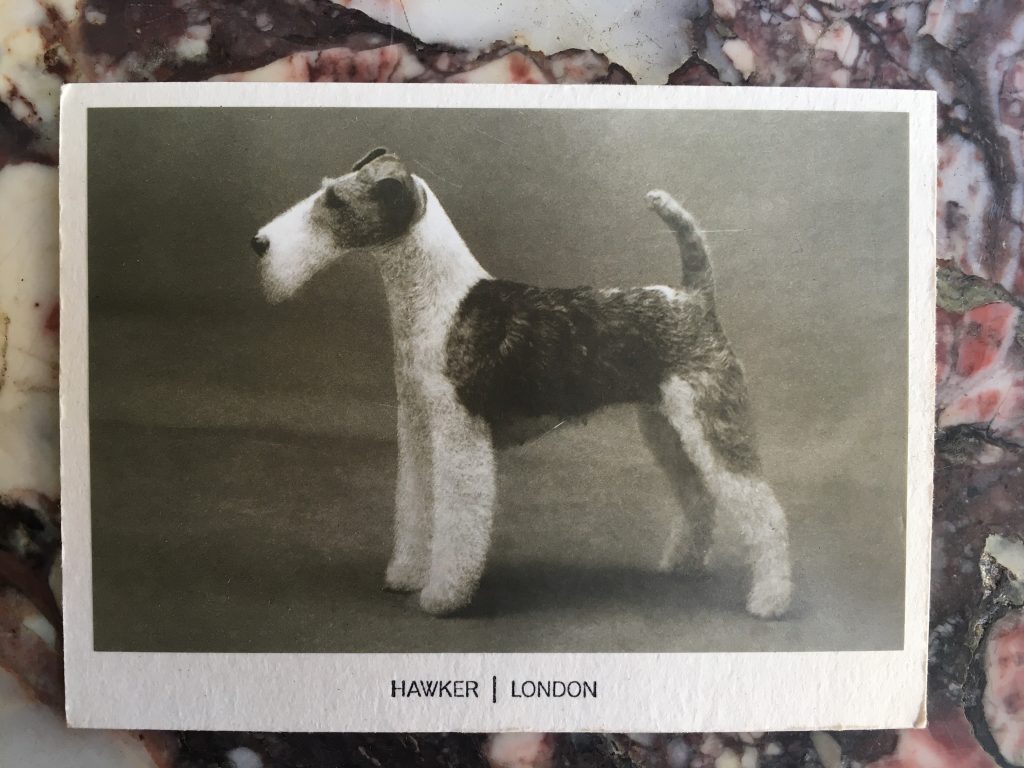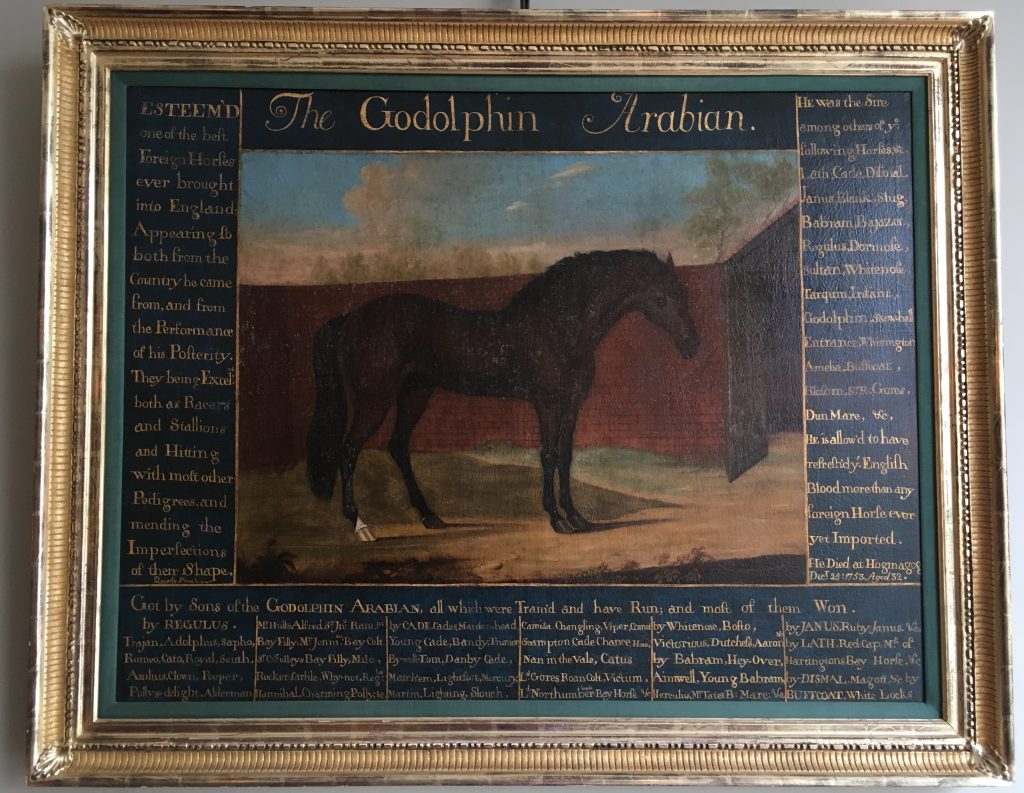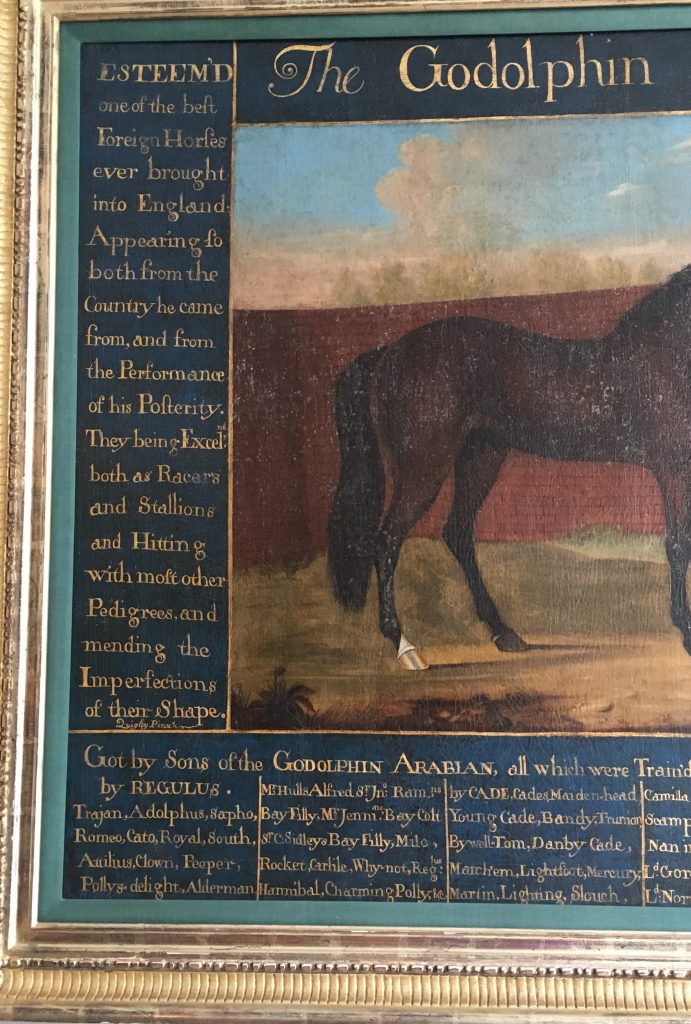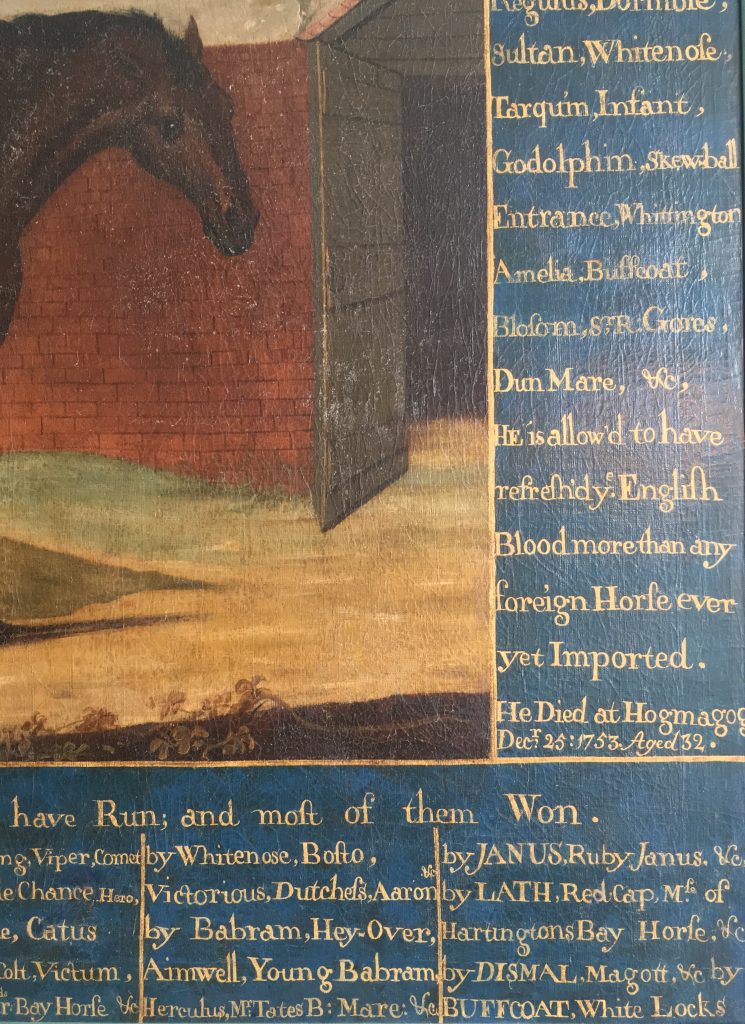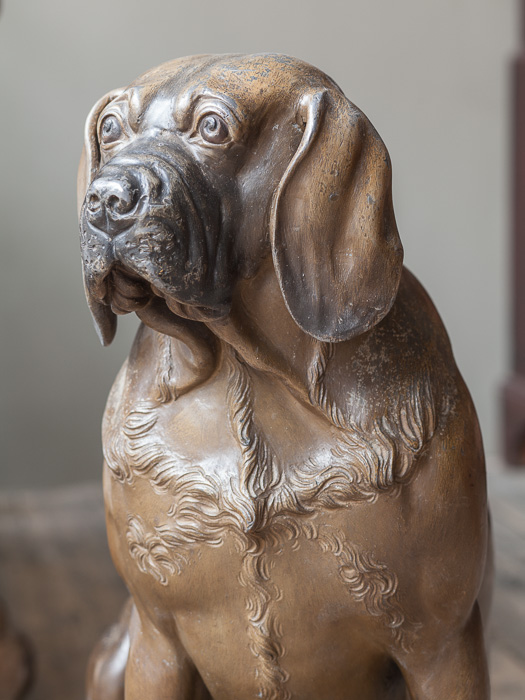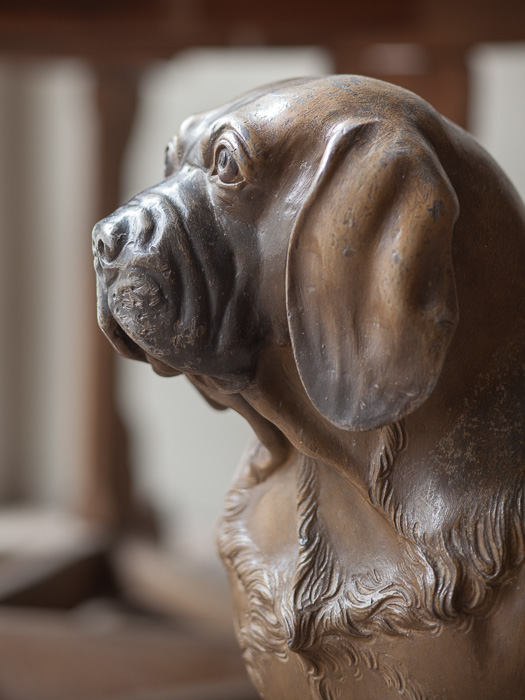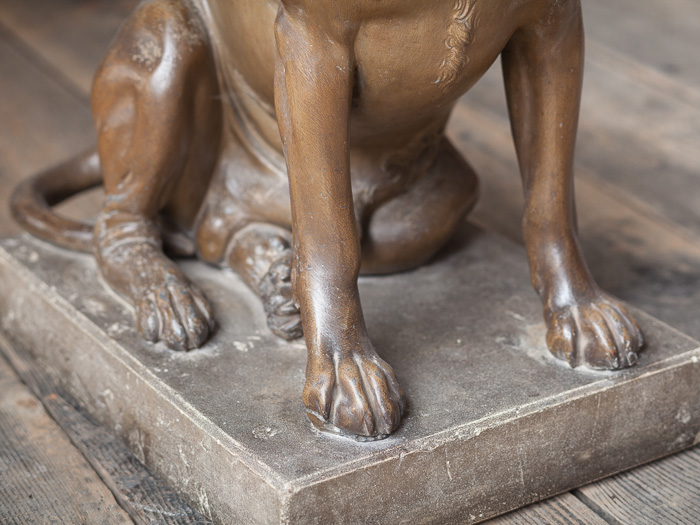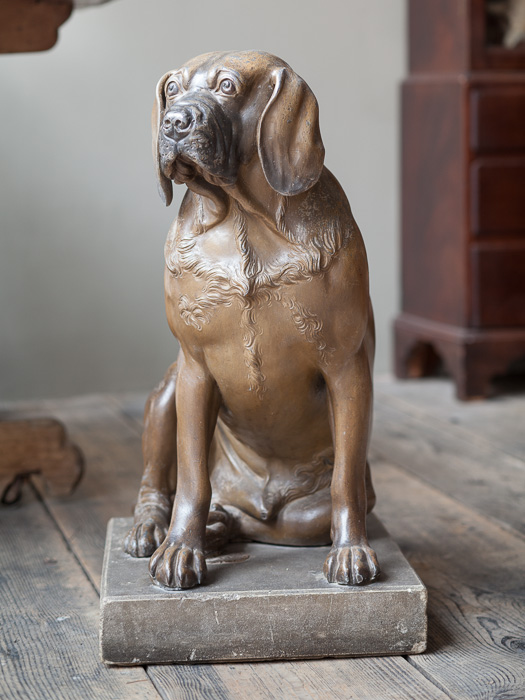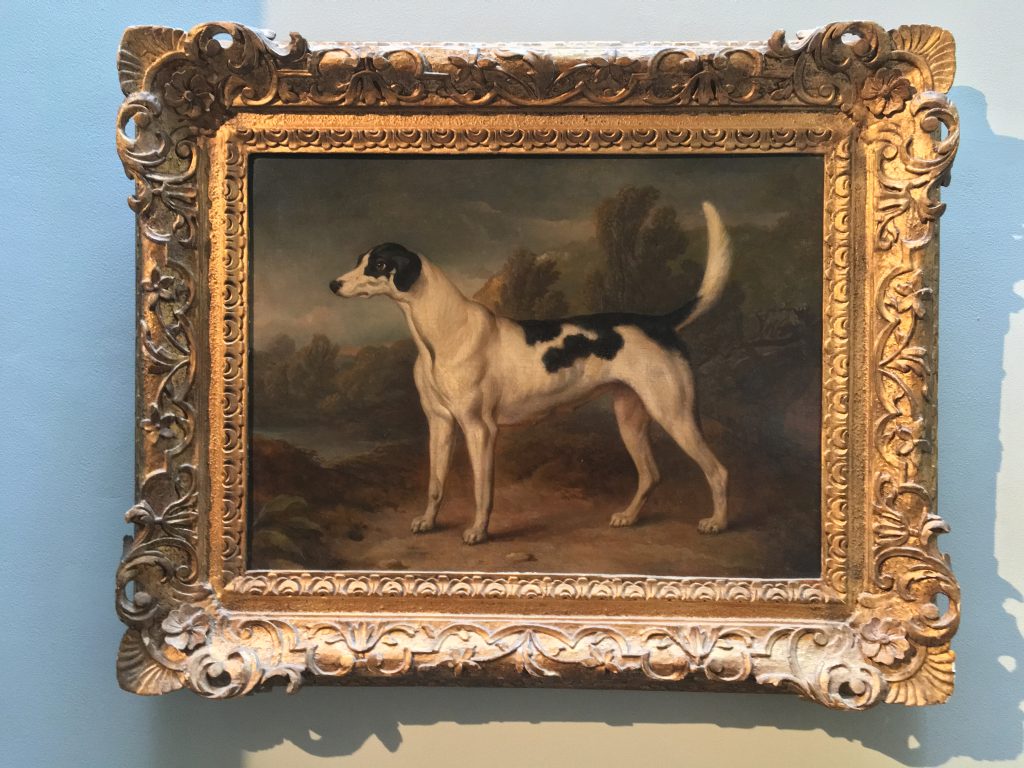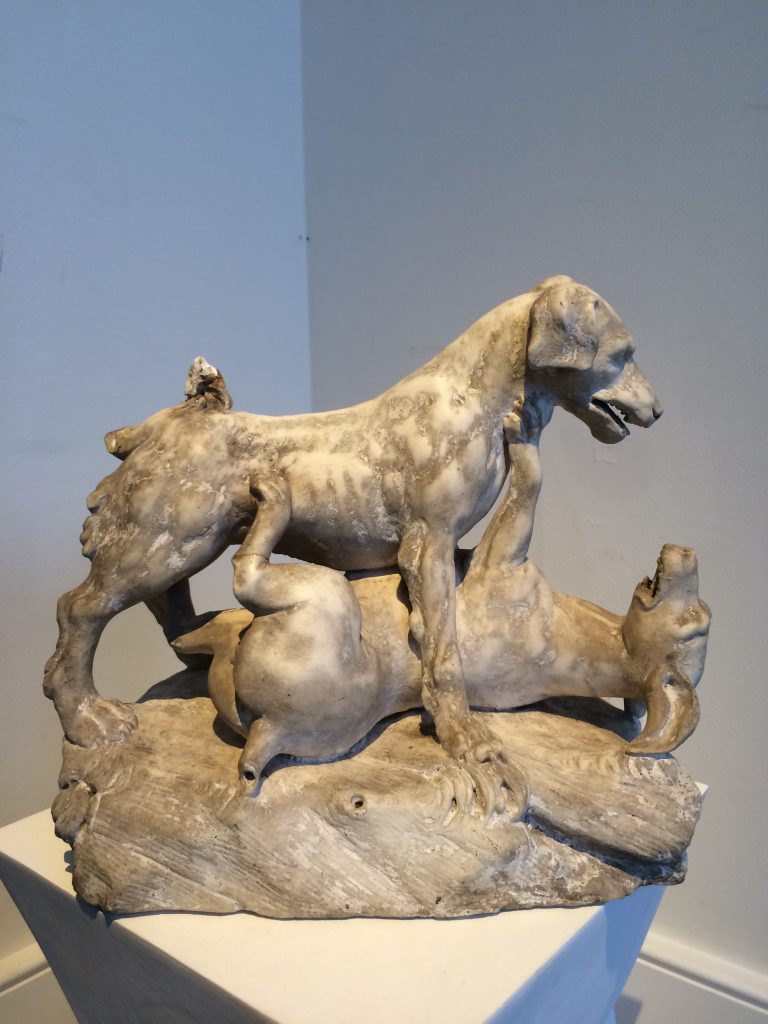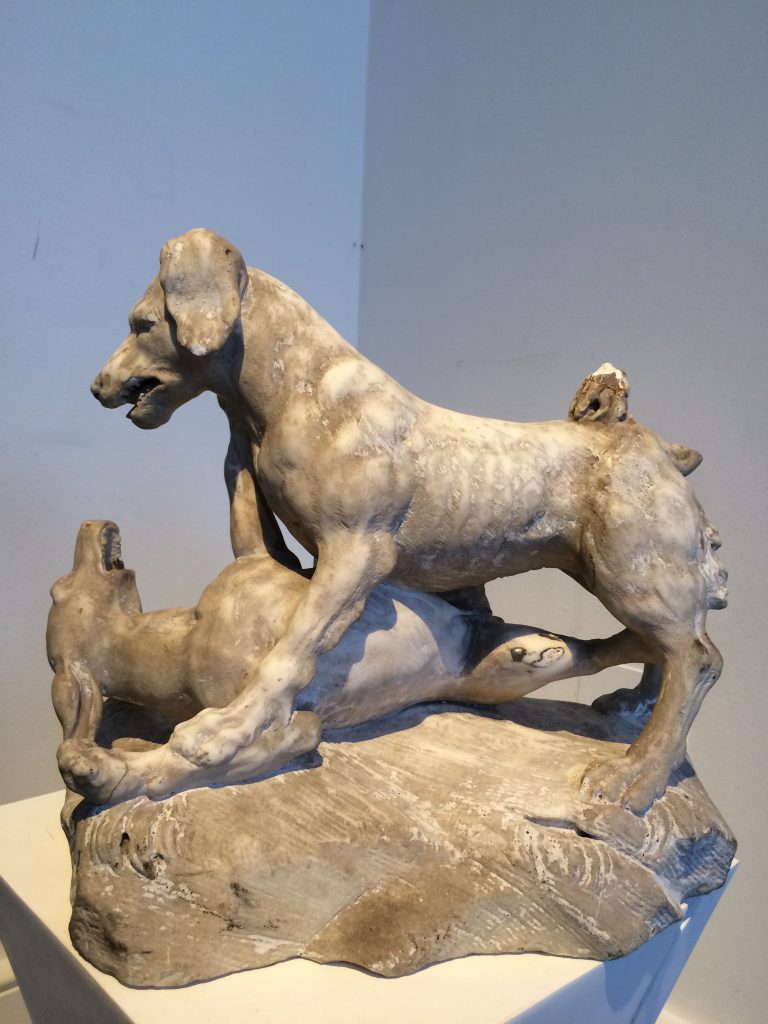I loved my first dog Harvey so much that I paid homage to him by using an early photograph of a wire fox terrier as my logo for Hawker ( the antique furniture side of Jamb ) I used it with a sense of irony as Harvey (who was very scruffy and had a demeanour like Eeyore) could never have been as regal as the image. However, like most antique dealers and their dogs, anyone who knew me at the beginning of my antique days knew Harvey and understood the link.
I therefore understand the great significance of the depiction of animals in paintings and sculptures. In the showroom at present we have some very special 18th Century portraiture of animals.
An 18th century painting by Daniel Quigley of the Godolphin Arabian -‘Esteemed one of the best Foreign horses ever brought into England’ -indeed he was the leading sire in Great Britain and Ireland in 1738, 1745 and 1747.
A demand for horses in art arose in the 18th Century with the popularity of horse racing and hunting – the Century in which the thoroughbred was perfected as a breed. There was only two other horses as infamous as the Godolphin Arabian horse (1724-1753) the Darley Arabian and the Byerley Turk; together they were the three stallions that founded the thoroughbred race horse bloodstock.
It is fate that the deep shouldered bay with one white heel ever came to England. At one point in his life, he was used as a cart horse by Louis XV. However he was imported into the country by Edward Coke and sent to Longford Hall, Derbyshire where he began his breeding career as a ‘teaser’, used to gauge a mare’s receptiveness. It so happened that the first mare took to the Godolphin Arabian instead of the chosen stallion and it marked the beginning of an extremely successful line of thoroughbred horses. When the owner of the mansion died, the Godolphin Arabian moved to Babraham, Cambridgeshire with the 2nd Earl of Godolphin, from which he was named and where he remained until his death.
Although he himself never raced, it was said ‘There never was a horse…so well entitled to get racers as the Godolphin Arabian…his shoulders were deeper, and lay farther into his back, than those of any horse yet seen‘
From the multiple horses he sired, “all of which were trained and have run and most of them won” his first offspring, Lath, went on to win the Queen’s Plate all nine times he ran at the Newmarket races. Sea Biscuit and Man o’war are descendants of the 18th Century prized horse.
The name Trump is synonymous now with only one man, but in the 18th Century it referred to Hogarth’s most precious pug dog.
Hogarth was renowned for being a great campaigner against animal cruelty and no image of him is complete it seems without his dog by his side.
The George III painted lead sculpture (1760) is attributed to John Cheere. (1709-1787). The English sculptor specialised in creating lead busts for the decoration of libraries and stairwell, and of course is infamous for making some of the finest chimneypieces from that time.
We named our Cheere reproduction marble fireplace after him.
A late 18th century, early 19th century “Portrait of a Hound within a landscape”
This oil on canvas painting is English school – the dominant school of painting from 1750-1850. The term marked the rise of English artists whose work was seen to rival the quality of continental art. Hogarth was an early representative of the English school.
These fighting dogs are attributed to Francesco Antonio Franzoni (1734-1818) the Italian sculptor and restorer. He was born in the marble city of Carrara where he trained. He then moved to Rome where as well as becoming a sculptor, he was renowned for restoring antique Roman Sculpture, many of which were housed in the 18th Century Museo Pio Clementine, the Vatican museum of antiquities.
Franzoni often invented totally new compositions from small fragments but this piece is entirely his own work and based on one of his restorations, now in the Vatican. It is a wonderful sculpture and I love the way the jaw of the recumbent dog has been carved.
A later life size version was sold at the Duchess of Devonshire’s sale at Sotheby’s, left to her by James Lees Milne, an expert in Country houses.









